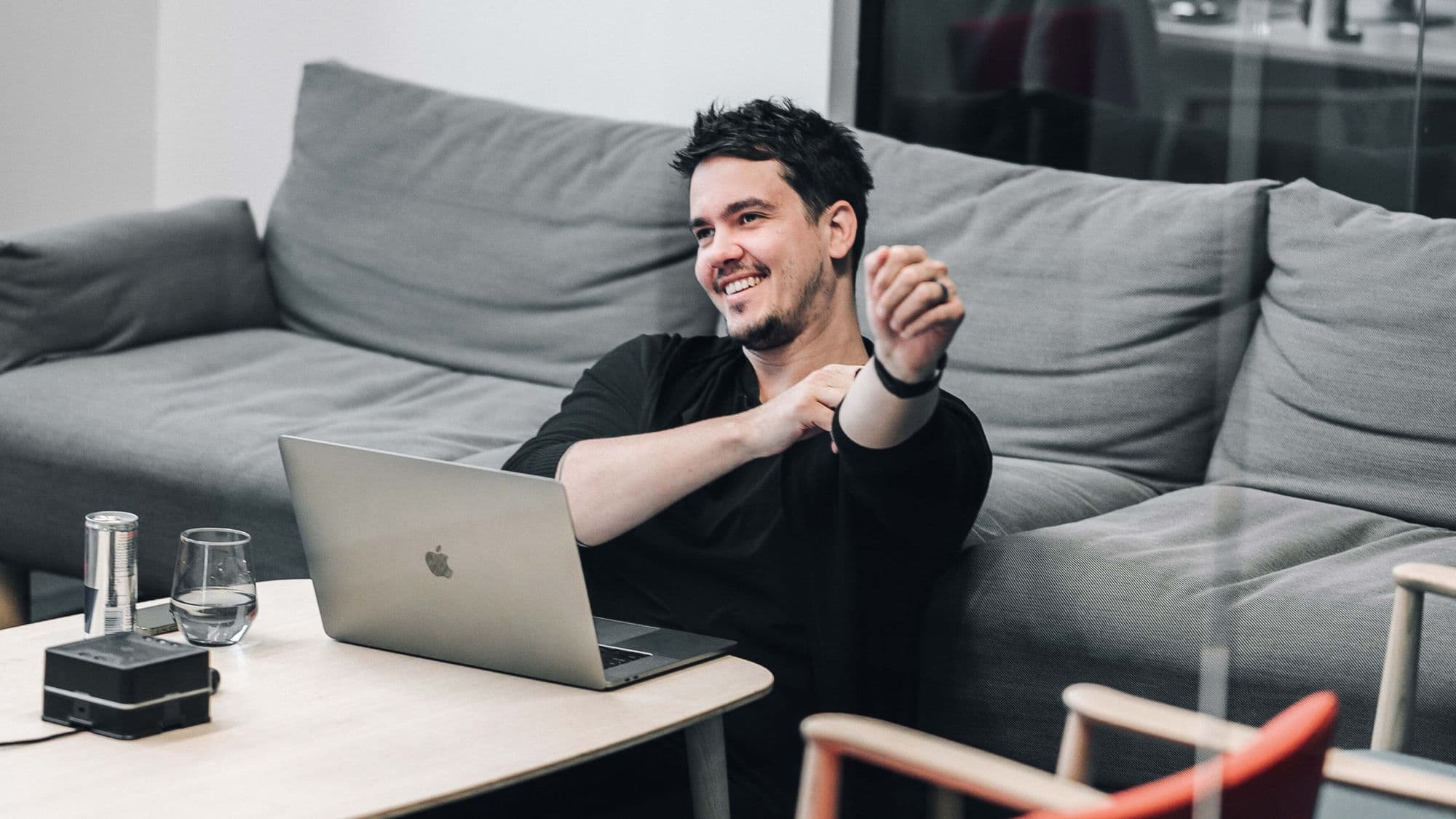While typically called “performance reviews,” we see them as much more than evaluating work performance, offering feedback and discussing compensation. It’s also a time of sharing, which means it can get profoundly personal. No stone is left unturned, and each review is what suits the given individual. It’s when we connect, run through our plans together and find reassurance that we are there for each other, whatever happens.
The main reason for this article is that I would like to give every candidate who wants to join STRV a sense of what happens once they become a part of the team. It should answer questions about our team philosophy, career growth options and the STRV style of doing things. While I’ll write from the perspective of design and engineering, the core attributes of these reviews are similar across all teams at STRV.
I cherish the phrase that we go to work as a whole, with everything we are. STRV doesn’t just hire based on skills — it’s the character, passions and hidden gems that often determine who makes the cut. If you’ve read about our hiring process, it shouldn’t surprise you that reviews stand on a similar foundation. There are no specific steps of what to do, but rather how we do it and why.
Introducing Reviews
In a nutshell, reviews are a dedicated time for team leads to share feedback with their team members and vice versa. They tackle both hard skills, soft skills and compensation. But more about the specifics later on.
The Heads of Delivery (product management), Finances, HR, Marketing, Sales and myself are reviewed by the CEO, usually at the end of the review period in order to share all feedback we’d received from our own teams. In terms of design and engineering (our most complex team), I review the Platform Leads — people who lead teams of Android, iOS, Machine Learning, Frontend and Backend engineers, as well as Design and QA — and the Leads review their respective teams.
While we have sync meetings and chats with our team members quite frequently, reviews have their designated time in March and September. During these months, we meet with absolutely everyone on our teams and we just talk it all out. And there’s usually a lot to talk about.
Although we can have short, barely one-hour-long reviews, the reality is that even two hours are often not enough. A deeper conversation is great, but so is a quick chat! Every review is planned in advance and its setup depends on both sides’ preferences. Absolute isolation in a meeting room, chill with a coffee at a cafe or a calming walk... you pick.
With more than 190 people, this may seem time-consuming, but it’s an integral part of our identity. Regardless of how big STRV gets, making sure that everyone feels heard and respected will always be a priority.
Getting the Right Feedback
Throughout the six months between reviews, all team leads note down their own personal observations and gather feedback from colleagues and clients. For the sake of this article, let’s use the engineering role as an example from here on out.
During reviews, an engineer receives feedback from the team lead, fellow engineers, designers and QA testers in the project teams, project managers of the teams and, of course, any client feedback that we receive.
As I’ve already mentioned, reviews mirror our hiring process. We don’t just talk about the person’s primary tasks — which, in our example, is engineering work. At STRV, engineers and designers work directly with the client on all projects. That involves many other skills that require attention and are highly valued: communication, organization, reliability and just the overall attitude. We are partners to our clients, not just a pair of hands. The relationship is about more than just what we deliver. It’s about our entire approach, and that’s all covered during a review.
Finally, we value the vibes within our teams. We work together, share, help each other… we are friends. And how one deals with others and how much he/she contributes to the good of the team is not overlooked. The basic mantra is to know our people, to be attentive to all of the tiny things that are usually overlooked and often not even considered as essential in a work environment.
Human Approach Only!
In the best-case scenario, both sides share as much relevant information as possible. As the sharing evolves, it can even touch on some personal matters. The conversation during reviews can take various forms, and we are grateful that we can feel this level of trust and closeness with one another. We are all going through a lot outside of work. For many, there’s no clear line between work and life; work can become a lifestyle for some, or there may be struggles with work-life balance. No matter the reasoning, no one can be at 100% all the time, and that needs to be respected.
Sudden changes in life, hard times or any other kinds of difficulties — this can all affect our performance. When someone goes through such an experience, the team leads and I often adjust conditions on projects, provide individual support or try to be considerate in any other possible way. We get the best from our people, so we’ll gladly be there for them at their worst.
Everything Is a Dialogue
… and it would be unacceptable if it was any other way. We are an agile company, and that affects the leadership as well. Reviews are the ideal time to get new input on how we do things overall. We often get great points for improvement in development or project management. In fact, because engineers are hands-on on active projects much more than team leads, reviews can also spark great product insights that we can discuss with clients.
We’re also always open to hearing ideas that could help any of our teams and their initiatives. As we’re transparent about our company’s performance and share a lot during our regular All-Hands meetings, perhaps there could be some great points for more general improvement as well — and that applies to even the smallest of things. For instance, we adjusted the selection of our office snacks based on feedback from reviews. Anything can be addressed. Anything.
Personally Tailored Next Steps
If it’s not obvious by now, let me state it again: At STRV, we embrace every single individual as a unique person with unique talents, skills and personality. During reviews, we create any necessary next steps together. Both sides need to agree on them, and it is always possible to adjust them during the next review (or sooner, of course).
By being honest and open with each other, we can figure out which new challenges suit every person. Then, we find ways of supporting them. One junior engineer may need to learn and apply some new technological knowledge. Another might need to work on his/her presentation skills. With senior engineers or technological leads, the focus could be on managerial skills… or learning an additional platform. There are many opportunities to grow here.
Every review reacts to the previous. We understand that the conditions to realize any given goal can change, and so can the preferences. Adjustments can always be made. The important thing is that everyone always knows what is expected of them in order to progress further in both skill and compensation.
Last Word
At STRV, we do our best to really know our people. Aside from just sharing feedback on what to constantly improve, we are always trying to celebrate and cheer loudly for all the things that have already improved and are working well! Whether you choose STRV or not, I hope that you end up in a place where you and your work are appreciated, where your team lead really knows you and where you feel good, every day.







